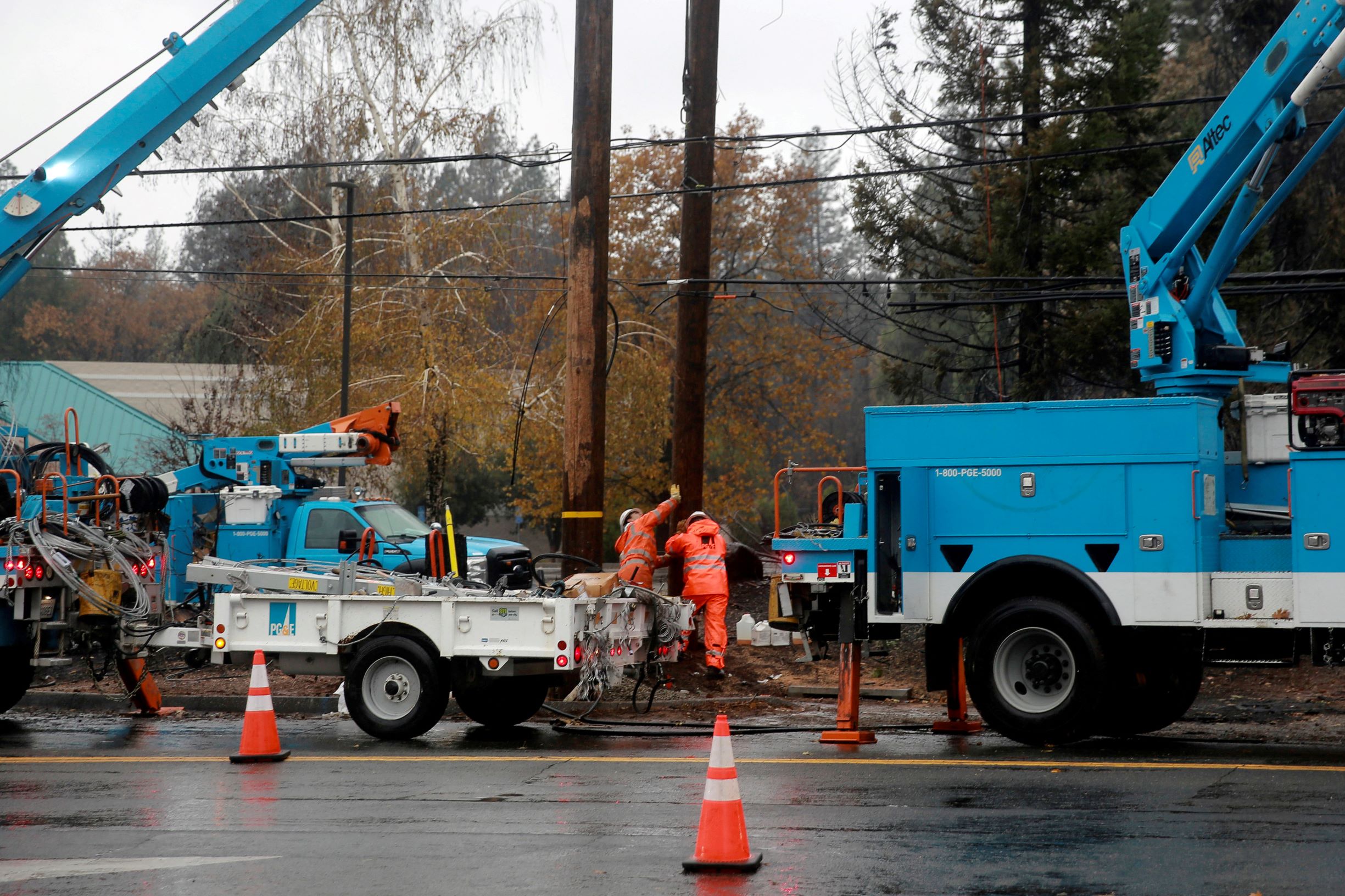
Power cut to millions as California faces heightened wildfire risks
By Steve Gorman
LOS ANGELES (Reuters) – Electricity was shut off to nearly 750,000 California homes and workplaces on Wednesday as Pacific Gas and Electric Co (PG&E) imposed a string of planned power outages of unprecedented scale to reduce wildfire risks posed by extremely windy, dry weather.
The power cut knocked out traffic signals, forced school closures and shut businesses and government offices across northern and central California, said Brian Ferguson, a spokesman for the state Office of Emergency Services.
One key disruption was at the University of California at Berkeley, which canceled classes on Wednesday during the first phase of the “public safety power shutoff”, targeting more than 500,000 homes and businesses.
A second phase began at 3 p.m. Pacific time and extended the blackout to 234,000 more customers, said the utility, which was considering a third phase for 4,600 more dwellings and businesses.
Although PG&E said changing weather conditions and work-arounds had restored power to about 44,000 customers, its action was the largest precautionary electricity shutoff undertaken by California’s biggest investor-owned utility.
“It’s too bad that it is such a large area to be turned off,” said Matthew Gallagher, a resident of Vacaville, a town 60 miles (100 km) northeast of San Francisco, where everything, from the Walmart outlet to gasoline service stations, was closed for lack of power.
A similar cutoff was under consideration by neighboring utility Southern California Edison for nearly 174,000 of its customers, about 50,000 of them in Los Angeles County, should severe winds hit southern California on Thursday as forecast, SoCal Edison spokeswoman Taelor Bakewell said.
Some of California’s most devastating wildfires were sparked in recent years by damage to electrical transmission lines from recurring bouts of high winds that then spread the flames through tinder-dry vegetation into populated areas.
“We are entering into a two-, three- or four-day period of extreme fire danger in California,” Governor Gavin Newsom said at an event in San Diego on Wednesday.
‘RED FLAG’
Gale-force wind gusts, mostly in higher elevations, were expected to intensify late on Wednesday across northern and central California before gradually migrating into southern California overnight and Thursday, National Weather Service meteorologist Steve Anderson said. He said extremely low humidity levels added to the fire threat.
The California Department of Forestry and Fire Protection (Cal Fire) said “red-flag” warnings were posted across the state for what was shaping up to be the strongest wind event so far this season.
PG&E warned residents to prepare for outages that could last several days. But spokeswoman Kristi Jourdan said it expected to restore supply to most customers within 24 to 48 hours after high winds abate, once power lines were inspected and any damage repaired.
Many customers live in areas where breezes were light on Wednesday, but some are served by transmission lines hit by high winds elsewhere and thus were part of a larger portion of the grid that was turned off, PG&E spokesman Jeff Smith said.
It urged customers to stock up on flashlights, fresh batteries, first-aid supplies and cash, and plan for healthcare needs, from refrigerated medicine to electrical devices.
The utility said it opened 28 community centers across the planned outage zone to provide restrooms, bottled water, battery charging and air-conditioned seating during the day.
PG&E has drawn increased scrutiny in recent years over maintenance of transmission wires and other equipment implicated in major wildfires.
In May, state fire investigators determined that PG&E transmission lines caused the deadliest and most destructive wildfire on record in California, last year’s wind-driven Camp Fire that killed 85 people in and around the town of Paradise.
Cal Fire likewise concluded that PG&E power lines had sparked a 2017 flurry of wildfires that swept California’s wine country north of San Francisco Bay.
PG&E filed for bankruptcy in January 2019, citing potential civil liabilities in excess of $30 billion from the fires.
(Reporting by Steve Gorman in Los Angeles; Additional reporting by Jim Christie in San Francisco, Rich McKay in Atlanta and Dan Whitcomb in Los Angeles; Editing by Paul Tait and Clarence Fernandez)



